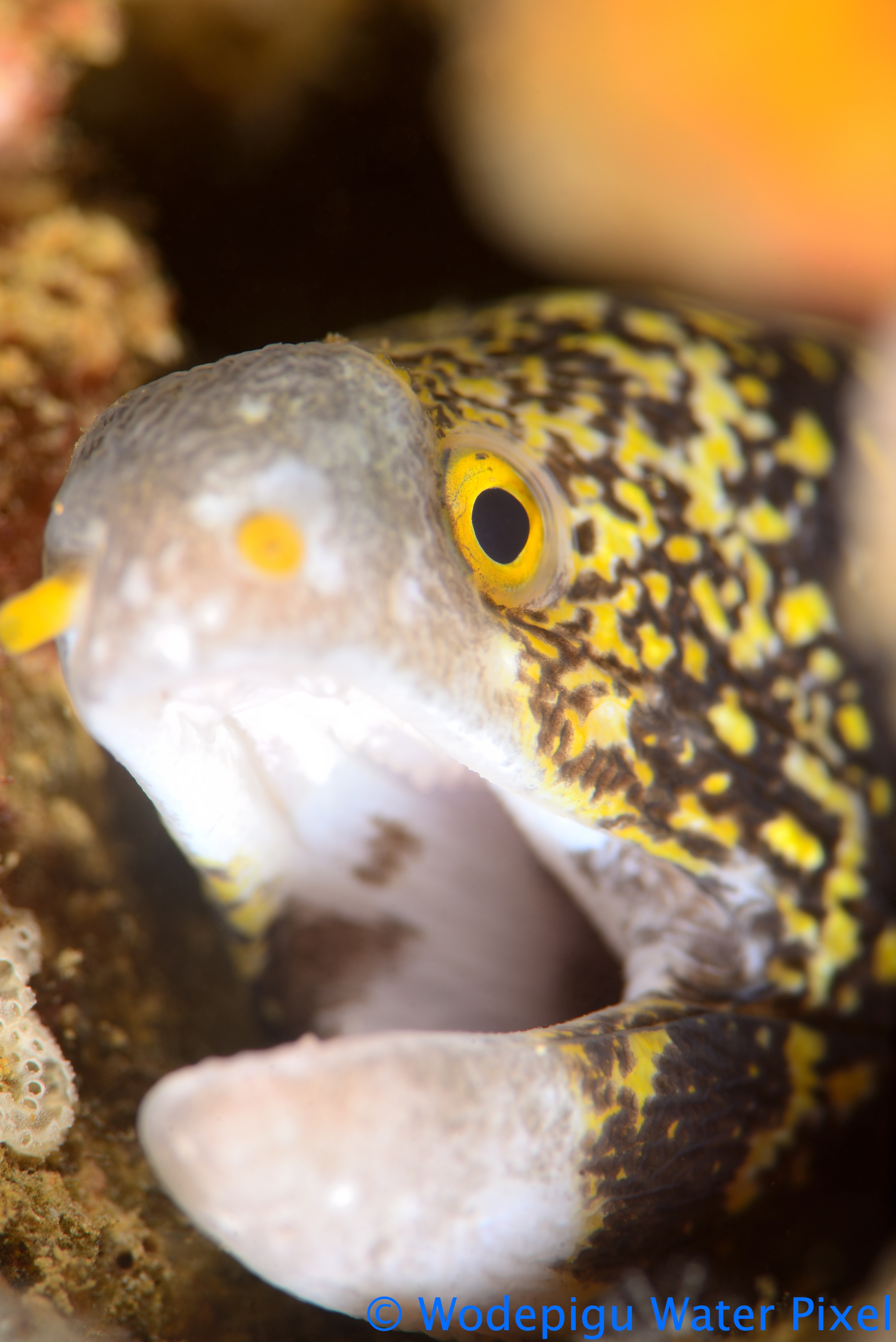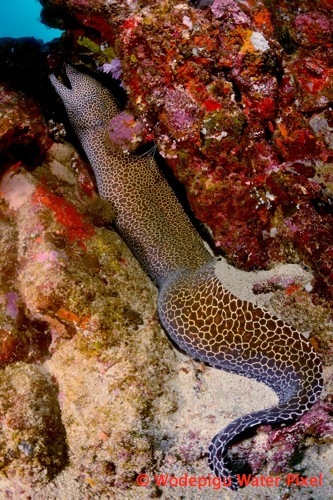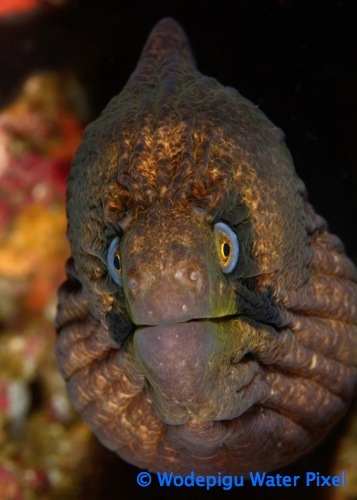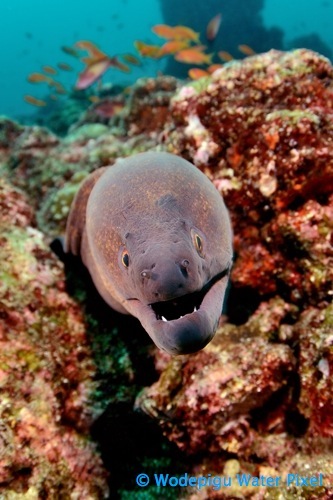Moray Eels: Tips to Capture that Perfect Shot!
Feb 19
Moray Eels are common on tropical coral reefs. Their elusive nature makes them great ambush predators, however it also makes them an enigmatic member of the reef community. Eels usually lurk in nooks and crannies on the reef, so chances are high that one may encounter their menacing stare when looking for other macro subjects.
Morays have an intimidating demeanor, but it’s really just a facade, masking a rather shy character that would rather hide than fight. Once divers gain experience observing morays they become great photo subjects. Here are some pointers to help increases the number of keepers for your photo collection:

Honeycomb Moral Eel. Sigma 15mm, 2 Sea & Sea YS-D1s. ISO100, F8, 1/80s.
Location, Location, Location!
In my experience diving in Southeast Asia there are two locations that stand out in terms of Moray numbers and species variety: Ambon Bay in the Malukus and Pulau Weh at the northern tip of Sumatra. Having more morays present increases the probability that one might be unabashed enough to be your model for the day.
Vertical Instead of Horizontal
Moray Eels have a vertical tapered body shape, so shooting in the vertical perspective allows the shooter to get closer and fill the frame with less risk of cropping out the subject. Getting closer also has the advantage of reducing the water space between the lens and the subject, resulting in a sharper image with more contrast and less chances of backscatter.

Masked Moray Eel. Nikon 60mm with Kenko 1.4x Teleconverter, 2 Sea & Sea YS-D1s. ISO100, F22, 1/320s.
Best Lenses
Moray Eels can leave photographers in a quandary when choosing a lens since great images can be captured with both wide-angle and macro setups. This is where compact camera users have the advantage over their DSLR/mirrorless counterparts, for they have the ability to switch between both perspectives while diving (using wet lenses). When using a compact camera, try using your widest setting to get as close as possible, and if encountering a smaller specimen zoom in as needed in combination with a macro wet lens for some close-up shots. Settings at F8 and 1/160s would be a good start, for Morays tend to be fidgety at times.
DSLR users can use a 60mm macro lens for best versatility when shooting closeups. A 105mm would be perfect in clearer water for shy eels that require more personal space to get comfortable in front of the lens. Settings at F16 and 1/160s would be sufficient. Sizeable Moray Eels are great for close focus wide-angle shots, and a fisheye like the Tokina 10-17 or a wide-angle lens like the16-35mm would be your best bet. Settings at F8 and 1/100s.

Yellow Margin Moray Eel. Tokina 10-17mm Fisheye, 2 Sea & Sea YS-D1s. ISO100, F9, 1/25s.
Shooting Moray Eels does require a certain amount of patience however their niche in the reefscape makes them an indispensable portion of your underwater portfolio!
Victor Tang is the founder of Wodepigu Water Pixel, an adventure dive and photography consultancy with a nose for off the beaten track dive destinations. When not stranded on shore with other pursuits as a musician and TV producer, Victor is on the prowl around Southeast Asia searching for new pristine waters to explore.





Related Articles
Popular Articles